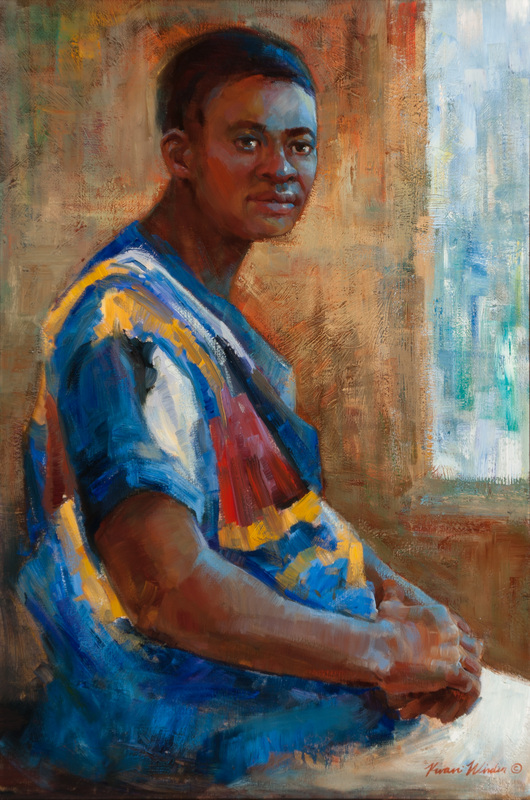"Our Heritage" Portraits
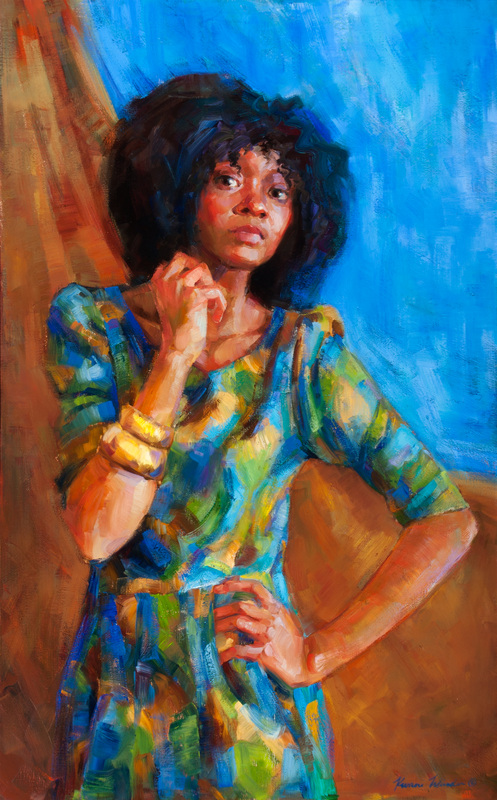
“ My full name is Suzette Etuhole Nelago Nankelo Eises.
I come from two different cultures. My mom comes from a village called Okwaaludhi in Ovamboland which is in northern Namibia. They speak Oshiwambo. My father’s culture is mainly from the northwestern region of Namibia, but is spread across the country. They are the Damara people and speak the Khoekhoe language which is a click language spoken in Namibia, Botswana and South Africa. They are the oldest inhabitants in Namibia after the Bushmen and the Nama. My last name comes from my father’s last name which is actually Eiseb (with a b), in the Damara culture the females use the ’s’ instead of the ‘b’ which the men keep in the last name.
The African print dress that I am wearing is very commonly worn at special occasions in parts of Africa especially at weddings.
I grew up in a tiny diamond town called Oranjemund (which is German for mouth of Orange, referring to the mouth of the Orange river located between Namibia and South Africa). I went to high school in South Africa and lived in England for two years after high school so I was able to learn about other cultures.
My heritage is very important to me, but because I lived away from home and haven’t been able to speak my native languages completely I’ve learnt to appreciate and adapt to other cultures and mix it all up and find my own identity.”
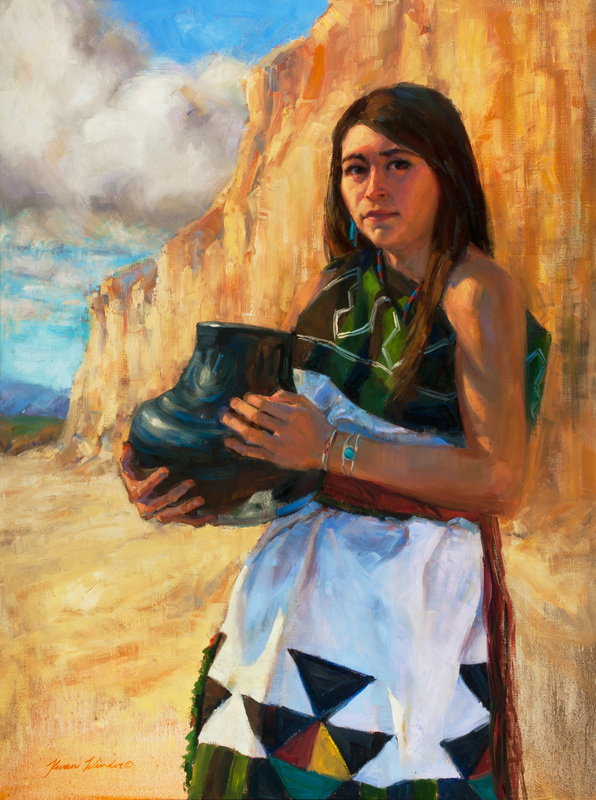
Mirdacia is my cousin and this painting represents my Santa Clara Pueblo heritage (“Kah-poeh” the Tewa name for my people). The pot she is holding is one that my great grandmother Ge-ya (meaning grandmother) made and is over 200 years old. The markings on the neck of the pot represent bear paws, which are ancient symbols of my people. The dress she is wearing is called a manta and is always worn over the right shoulder with a sash belt around the waist and strings hanging down on the left. Sometimes we wear a satin cape that is also tied on the right shoulder. Anciently they would wear a long undergarment but today we now wear a long white-sleeve shirt. This dress is what we wear when we dance for feast days and other ceremonies. Mir is standing in front of the cliffs where my ancestors used to live (Puye Cliff Dwellings).
My family was the first to join the Church of Jesus Christ of Latter-day Saints from our village. They had to give up their Indian way to become members, but I am so grateful that they did not give up their culture and heritage.
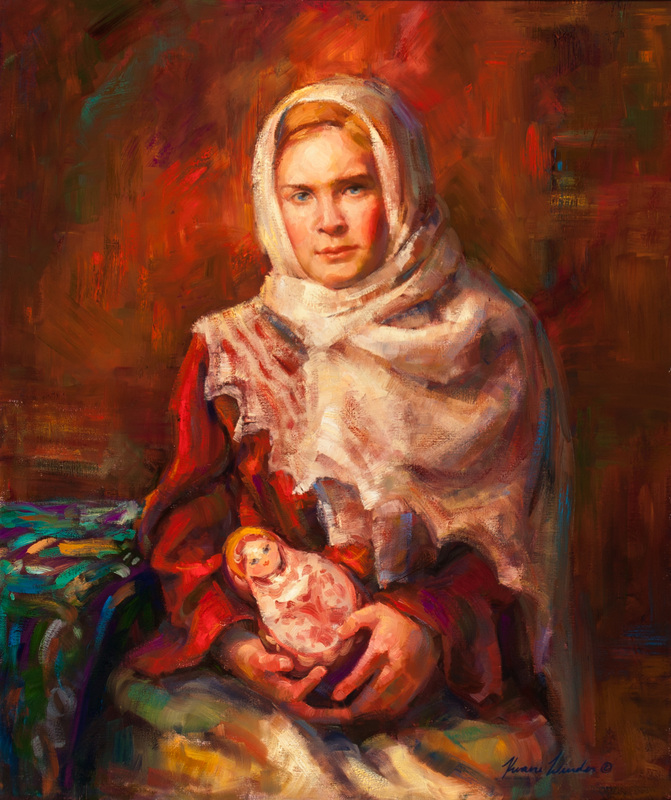
“I feel different, kind of special being half-Russian.”
Katya’s formal name is Ekaterina (named after her grandmother) Sergeevna (meaning the daughter of Sergei). The middle name of the child always identifies their father. Kayta is the nick name or familiar form of her name.
Katya’s namesake would crochet beautiful scarves out of white wool in the same style that is pictured. She is holding a matryoshka (which literally means little matron) or nesting doll. Traditionally the outer layer is woman with a scarf over her head and the stomach has a design or picture that tells a story. The doll she is holding has the symbol of the double headed griffin; this is the nation symbol of Russia like the bald eagle is the United States. Red has always been a strong color in Russia and stands for its strength.
Tracing back her non-Russian family line shows in Katya is a reuniting of ancient ties. On her mother’s side is Prince Vladimer; who brought Christianity to Ukraine and Russia. Her mother is my cousin, but more like a sister to me. I share this lineage with them and admire their beautiful culture and heritage.
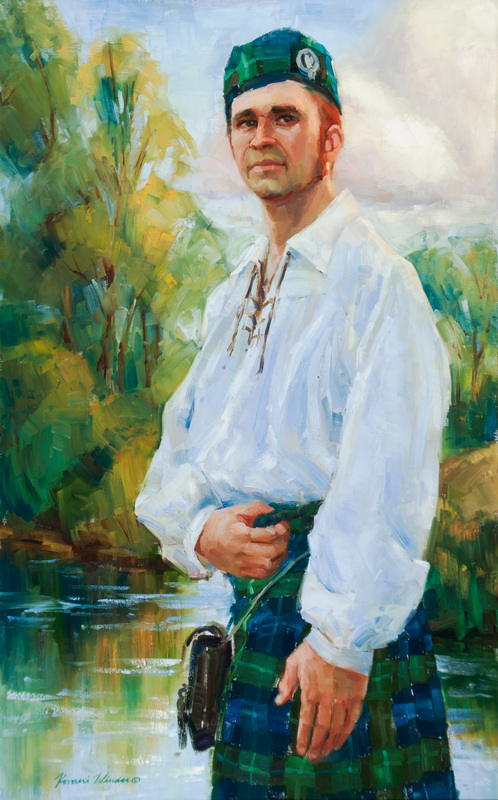
"My family emigrated from Scotland to England somewhere around the 1500-1600's and from England to Idaho in the late 1800's (In and around Montpielier)." The shirt is a traditional woven linen shirt. The kilt colors come from vegetable dies and are woven into a herring bone pattern. The pouch in front is worn with a silver chain and is decorated according to the formalness of the outfit; it is used to replace pockets.
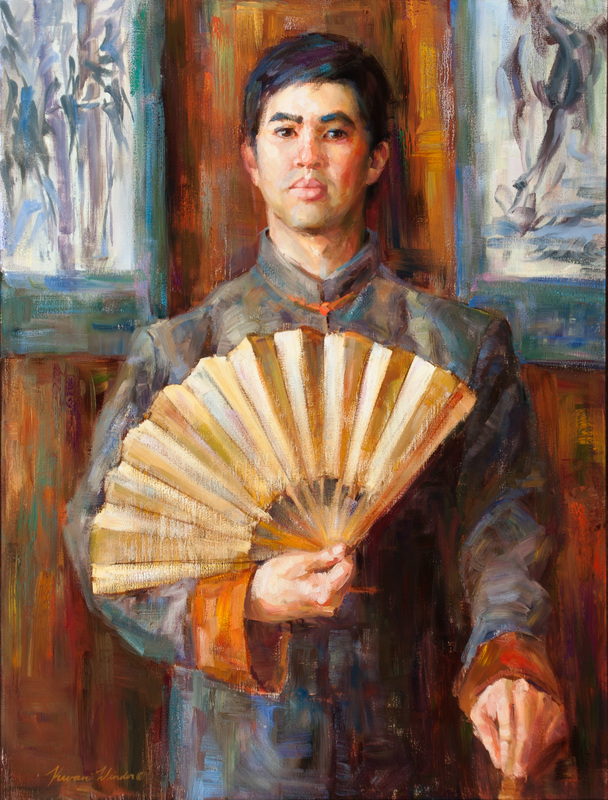
“For most people, responding to the question "Where are you from?" is quite a simple ordeal, but for me, it often requires an explanation of my heritage and life story.
I was born and raised in England to my Caucasian British mother and my Han Chinese father. I spoke only English growing up, and for the most part labeled myself as "British-English" when my identity was questioned, often adding that my Dad was from China. However, my peers always recognized a difference (my middle names and surname were certainly not typical of an Englishman!).
I had never lived for any significant period of time amongst those of my heritage--until I received a call to serve for two years in the China, Hong Kong Mission for the LDS Church. During this time I retired my "mother tongue" and learned my "father tongues" of Cantonese and Mandarin, and was singled out in positive ways for my unique ethnic mix. After this experience, I felt the need to refer to the Chinese as "my people," and discovered the half of myself that had been hiding during my childhood. Now, I am letting my British citizenship take second place to the opportunity of gaining U.S. citizenship.
I have realized the powerful need to better appreciate and understand where one has come from. But whether I am Chinese, British, or American now comes second to being a child of God, and a citizen of the world.
In this portrait I am wearing the traditional middle-class jacket dress and holding a typical somber, patriarchal pose.”
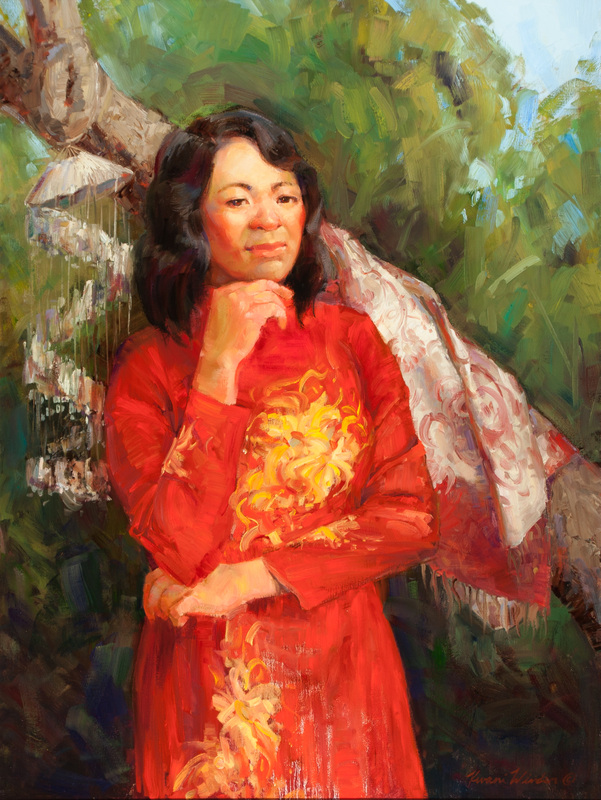
"My parents named me Lan Huong, which means "aroma of orchid". And "orchid" is the meaning of my mom's name. I am proud to be named after my mom, whom I love most and admire most. I was born in Ho Chi Minh City, the biggest city in Vietnam. It was not easy for my parents to move from the rural provinces to the city after the war. But thanks to their hard working, diligence, and especially their love for me and my brother, we grew up in peace, prosperity, and received a good education. With that example I came to the USA for my bachelor’s degree.
This dress was sent by my mom to me as a special gift. This is called "Ao dai" (means "long dress"). I used to wear these traditional clothes in my high school years, but in a simple white color with no decoration. My mom chose the red color to represent happiness and luck (it is also the color of the Vietnamese flag). Now, I only wear this dress in some special holidays. And I am very proud and happy to wear "Ao dai", as much as to be named after my mom, and as much as to have the Vietnamese blood in my veins.
No matter where I live or the language I speak, I am still a Vietnamese girl who loves and treasures Vietnamese cuisine, songs, and culture that focuses on family. This is this heritage I got from my mom that guides me to make the decision to serve God. I know that He will help my family to be happily together forever."
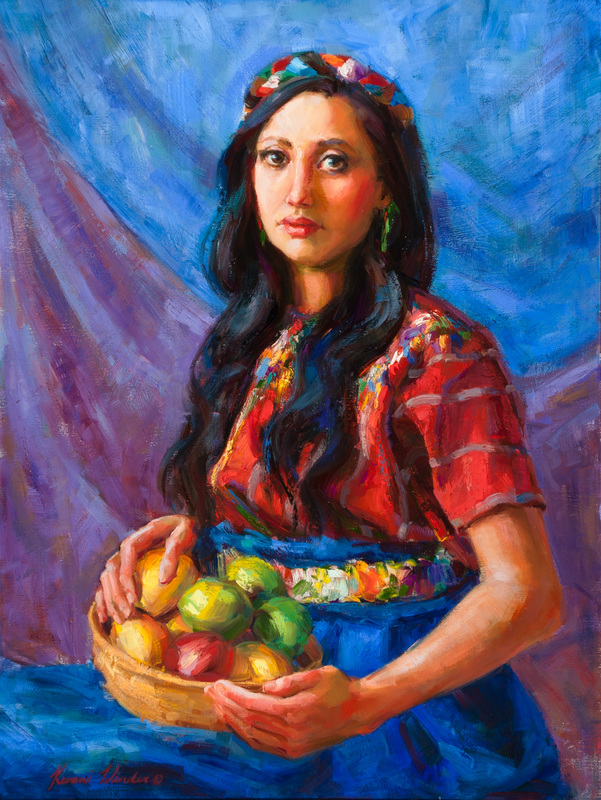
AJ is wearing a Graje (traditional outfit of Guatemala). Each part is hand woven and the patterns and colors represent a specific pueblo (town). The Huipil is the blouse and is usually decorated with flowers. The Corte is a wrap around skirt that has a more subtle strip or box pattern. The Saja is the belt, it can be very simple or very ornate with embroidery. The Cinta, or headwrap has different styles, AJ is wearing a cloth band that is wrapped with her hair.
The Guatemalan people are a very open and loving ancient culture. Their traditional clothing is a source of pride for them, with its ornate weaving and embroidery. However it is becoming a lost art. The upcoming generation does not wear them every day, only for special occasions, and it is very rare to see men wearing traditional clothing. AJ did not grow up in Guatemala but still loves her heritage and was recently able to visit Guatemala and learn more about her culture.
